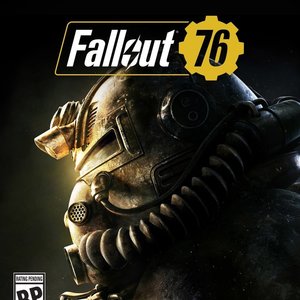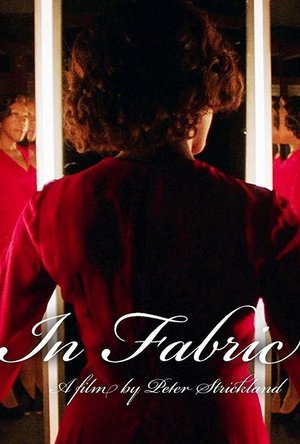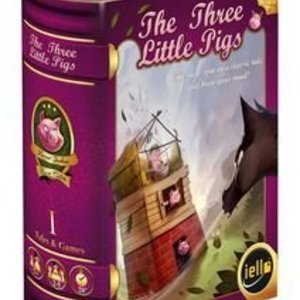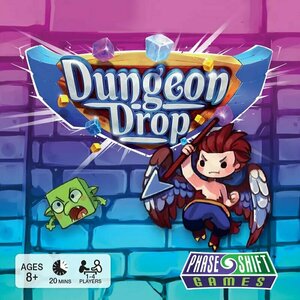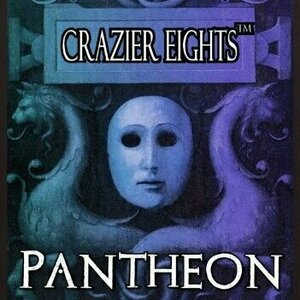Sheridan (209 KP) rated the Xbox One version of Fallout 76 in Video Games
Dec 29, 2018
Overall I don't love it, but I don't hate it.
In short;
Was it worth the $120 preorder price? F**k no.
Is it something I'll play complusively until I've done everything?
No.
Does it ensare you and leave you excited to play again?
No.
Does it exceed Bethesda's big exciting lead up to release?
Certainly not.
Is it the worst game ever?
No, not really.
Is it truly a Fallout game?
Nope.
Does it feel like a dodgy, half-assed turd that the developers crapped out to make money?
Why, yes, yes it does.
Is it a game for Fallout fans?
Maybe, if you're into online play with friends then I guess? If you look past all the bugs, the sub-par graphics and the dull unimaginative storyline sure, this might be a game for you.
Would I recommend it?
No, not unless it's in the $20 bin at EB and you have literally NOTHING else to play.
I'm just saying if this game were a puddle, I could stand in it bare foot and not get my feet wet - that's how much depth it has...
It isn't the *worst* thing I've spent money on (Technomancer takes that spot with Recore as a close second), but it's definitely not something to play if you're a Fallout fan. Just stick to the old stuff, it's waaaay better...
Darren (1599 KP) rated In Fabric (2018) in Movies
Feb 29, 2020
Story: In Fabric starts as we meet divorced mother Sheila (Jean-Baptiste) who is seeing her son Vince (Ayeh) prepare for college with his muse Gwen (Christie) slowly taking over the house, Sheila is looking for love in the personal ads with her needing to by a brand-new dress.
Soon after wearing the dress for the first time, Sheila notices strange things happening around the house as the tensions between Shelia and Gwen continue to rise. Shelia’s life gets turned upside down, which only escalates the more she investigates the original model of the dress.
Thoughts on In Fabric
Characters – Sheila is a divorced single mother who works as a banker, she is trying to move on with her life, as her son is about to be moving on with his life, she is gets a new dress, which only starts to increase the troubles in her life. Gwen is the older woman dating Sheila’s teenage son, she is slowly taking over the house being very disturbing with the tension filled interaction with Sheila. Reg is on a stage-do which sees him get the dress to wear, he is preparing for his own wedding, starting to see his own life spiral out of control, with Babs being the wife-to-be that is still preparing the wedding.
Performances – Marianne Jean-Baptiste is great for her part of the film, this is mainly because the film is split into two stories with eh dress, Marianne has the first one and shows the struggles she would be experiencing. When it comes to the rest of the cast, it does feel too late into the movie to get truly invested in the second set of actors story.
Story – The story here follows two different people that come in contact with a mysterious dress that has its own abilities to ruin their lives, we are left to guess just what is causing the pain to happen and why this dress is acting the same way around people. This story is flat out weird to follow, mostly because we have two different stories that might well be connected, they are separate enough to leave us with different ideas for each family to deal with. The story doesn’t seem to give us enough answers about the dress itself and with on fleeting images of the store it came from, which only ends up leaving us feel like we could have had more from the story.
Comedy/Horror – The comedy in the film comes from just how outside the box the idea is, while the horror comes from seeing how the dress acts and what it causes to people’s lives.
Settings – The film tries to keep the locations down to everyday ones, be it the two homes, the store or the employment locations, it shows how the weird events of the characters lives happen without anything needing to come from outside the box.
Special Effects – The effects are used well through the film as they show different levels of damage being caused.
Scene of the Movie – The fight.
That Moment That Annoyed Me – Not enough behind the mystery of the dress.
Final Thoughts – This is a horror that can be described with one key world, weird, it is filled with strange moments that only leave us with more questions than answers.
Overall: Very Strange.

WMV HD Player - Video Media Player & Importer Free
Utilities and Photo & Video
App
A Powerful Media Player which is FREE to use to play various video & audio formats not supported by...

DocuSign - Upload & Sign Docs
Productivity and Business
App
DocuSign is the easiest and most secure way to sign and get documents signed from your iPhone or...

Pocketbooth Photo Booth
Photo & Video and Entertainment
App
Turn your iPhone, iPad, or iPod touch into a 1950s-era vintage photobooth with Pocketbooth: the...

WMV HD Player - Video, Media Player & Importer Pro
Utilities and Photo & Video
App
A Powerful Media Player which you can use to play various video & audio formats not supported by...

Speed Cameras & Traffic by Sygic
Navigation and Utilities
App
Speed Cameras by Sygic is the most accurate and easiest to use GPS based app, which lets you: •...
Purple Phoenix Games (2266 KP) rated Tales & Games: The Three Little Pigs in Tabletop Games
Aug 18, 2020
Tales & Games: The Three Little Pigs (which I will fondly refer to as 3LP for the remainder of this review) is a cute little family dice and take-that game about building houses for maximum points while avoiding The Wolf’s hungry advances. The winner of the game is the Little Piggy who has built the most complete structures using the best materials that afford them the most endgame points.
To setup, sort the building tiles by material type and house level type as shown inside the box cover. Place the dice and spinner nearby. Let the youngest or cutest player go first. The game is now ready to be played!
On a player’s turn they will roll all the dice Yahtzee-style (so with two re-roll attempts), and the remainder of the turn is based on what is rolled. Players are not required to re-roll, but must stop once two or more Wolf symbols are rolled, or after the second re-roll. The player may then use the dice to purchase house materials corresponding to what was rolled. If three doors are rolled, a player may purchase a straw door (which cost two door symbols) or a wooden door (which cost three door symbols). These house parts can be of mixed materials, so once the pieces have been purchased, house construction can then be done.
Should a player roll The Wolf, then the “breath” spinner will be spun. The player who rolled The Wolf dice will choose an opponent AND one of their houses to target. Spin the spinner and destroy all matching pieces in their house. Some children have issues with this, but hey, they should have built more brick sections! Play continues in this fashion taking turns rolling and purchasing and building until several stacks of house sections are gone (depending on player count). All incomplete houses are crumbled, and piggy faces on standing houses are scored to determine the victor! When playing with my kiddo I don’t use the bonus cards, but they are available if playing with older and more strategic players.
Components. As this is one of the famed (and first in the line) Tales & Games Bookshelf games, it has set a standard for the series. These games come in boxes that look like books on the outside, open like a book, and contain a story to be read as a prelude to the game, if wished. The box is very very cool, and the insert is pink and wonderfully designed. The house tiles are thick and colorful, and the pink dice are just a joy to roll. I love the components in this one!
So obviously this is a game really designed to target younger gamers. And though it says 7+ on the box, I have successfully played this with my 3 year old with zero issues. He loves it, and in turn, makes me love it too. Now, I will certainly not pull this out at any given Game Night with adults (unless we have gamer spouses or friends who have NEVER played modern games at all). However, I really do enjoy playing it with my son for now, and for super-newbies. It is colorful, light on rules, offers some choices, and of course, has a touch of luck and take-that. All this while still feeling like you are in the story of The Three Little Pigs. So I say, if you were ever on the fence with this one – get it. Play it with whomever you like and just enjoy it. It is light enough with just a touch of adultness to keep you smiling. But don’t invite your Twilight Imperium or Mage Knight friends. They won’t like it. We at Purple Phoenix Games know how to get down with the simpler games as well, so that’s why we give this one a blown-over 9 / 12.
Purple Phoenix Games (2266 KP) rated Dungeon Drop in Tabletop Games
Feb 15, 2022
Dungeon Drop is a game of set collection, area enclosure, and dexterity (to a degree) in which players take on the roles of dungeon-delving adventurers trying to gather treasure, defeat monsters, and complete quests. To setup for a game, each player is randomly dealt a Race card and a Class card – each with a special ability for use during the game. Turn Order tokens are distributed based on the Initiative on your Race card, starting with the lowest number. All players are dealt a Quest card that will dictate some end-game scoring for the player, and Quests are kept secret from opponents. Now it’s time to setup the dungeon. Separate all the Small cubes from the Larger ones – purely based on size, the color of the cube does not matter. All the Larger cubes are placed into the game box, for use later. The starting player will gather all of the Small cubes (plus the giant Dragon cube) and literally drop them onto the center of the table. The rulebook suggests dropping the cubes from a height of 6-12 inches, to ensure the cubes spread evenly across the table. And bam – there’s your dungeon.
The game is played over 3 rounds during which each player will take a turn. Turns are broken down into 3 steps: Explore, Act, and Loot. To Explore, the active player will take a set number of the Larger cubes from the game box (at random, without looking), and will add them to the dungeon by dropping them onto the table. The next step is to Act. Each Race and Class card has a special ability, and during this step you will choose to activate one of those abilities to use this turn. The final step is Loot, and this is where the crux of the gameplay is. The cubes of the dungeon consist of Treasure cubes, Monster cubes, and Pillar cubes. Pillar cubes are what form the ‘rooms’ of the dungeon. When it is your time to Loot, you will form a room by selecting 3 Pillar cubes. These cubes will essentially form a triangle, and the inside area of that triangle represents the room in which you are in. Once you form a room, you will collect all cubes from within that space – whether they be Treasure or Monster cubes. Treasure cubes go into your Stash and are saved for end-game scoring, and Monster cubes will deal Damage to your Hero. All Heroes have a finite amount of Health, and you can never collect a Monster cube that would cause you to lose your last Health point.
When you are done Looting, flip over your Turn Order token to indicate that your turn is done. When all players have completed their turns in the round, Turn Order tokens are redistributed based on Weight – the number of Treasure cubes each player possesses. The player with the least Treasure is considered the ‘lightest’ and receives the 1st Turn Order token for the new round, and the rest are distributed likewise. A new round will then begin, and the game continues until 3 complete rounds have been played. At that point, players will add up their points earned from Treasure cubes and their secret Quests. The player with the highest score is declared the winner!
In theory, this game is really awesome. Players can create unique rooms by selecting specific Pillars, and collect different combinations of cubes each turn. AND since each player drops more cubes into play each turn, the dungeon is constantly changing, with new cubes, and because the cubes may knock others around. In actual practice, though, this game is kind of frustrating to me. For starters, when dropping all the Small cubes to form the initial dungeon, be prepared for them to go everywhere. The rules say to drop from 6-12 inches, but that means that you’re going to get quite a huge play area going on. And for me, that means cubes flying off the table, knocking into player components, and just wreaking havoc in general. Phase Shift Games does sell a set of Dungeon Walls for use during this game – to help define the play area and keep the cubes from going rogue – but I just wonder why they aren’t included in every copy of the base game.
Another problem I have had in my plays of Dungeon Drop is that the layout of the dungeon is usually very limiting. For some reason, all my Pillar cubes will end up clumped together and severely affects what you can do on your turn. Yes, more cubes are being added by each player every turn, but the Pillars are what you use to create rooms – if they’re all too close together, you get small rooms, or basically all Treasure lays outside of any possible room configurations. The solution that I’ve come up with for this issue is to drop all Treasure and Monster cubes as described in the rules, but then ‘sprinkle’ the Pillar cubes across the play area. It just helps even things out and create a bigger playing field.
When it comes to components, I have to say that Dungeon Drop is pretty nice. The cards are oversized, sturdy, and easy to read. The artwork itself is cute and I just enjoy looking at it! The cubes are nice and chunky, and easily identifiable as to what type of cube they are. Again, I wish the Dungeon Walls were included in the base game, instead of being an up-sell, but overall the production quality of the game itself is pretty decent.
You can probably tell by my comments that I’m not really a huge fan of this game. The concept is cool, but in all actuality, it’s what makes this game frustrating for me. This game isn’t supposed to be a super serious game, and is supposed to be more lighthearted and silly. I think it hits the mark in that regard, but overall as a complete game, it falls a little flat for me. I might pull this one out if I need a filler/small party-type game during a game night, but it’s one that probably won’t be making it to my table too often. I wanted to like this game so badly, but it just doesn’t quite reach that level for me. Purple Phoenix Games gives this one a stagnant 3 / 6.
Purple Phoenix Games (2266 KP) rated Crazier Eights: Pantheon in Tabletop Games
Aug 25, 2020
War. Old Maid. Go Fish. Crazy Eights. These are classic card games we probably all grew up playing. There have been many re-themes and new difficulty layers spread upon them to make them even more interesting. While UNO certainly has cornered the market on the Crazy Eights base, we have a new contender: Crazier Eights. Recoculous has published several versions of this card game with different themes: Camelot, Avalon, One Thousand & One Nights, Olympus, and Shahrzad. Today we are taking a preview of Crazier Eights: Pantheon.
You HAVE played Crazy Eights right? The card game where you attempt to be the first to exhaust your hand of cards, but you can only play down if you can match the suit or number on top of the discard pile? And if you can’t, you throw down an 8 as a wild and call the color to be played next? Well there you have the easy rules. Crazier Eights: Pantheon (which I will from here call C8P) holds basically the same rule-set with a few new mechanics and a theme. The win condition is still the same: be the first to exhaust your hand of cards, but to win you will need to play your hand strategically against your opponents.
DISCLAIMER: We were provided a copy of this game for the purposes of this review. This is a retail copy of the game, so what you see in these photos is exactly what would be received in your box. I do not intend to cover every single rule included in the rulebook, but will describe the overall game flow and major rule set so that our readers may get a sense of how the game plays. For more in depth rules, you may purchase a copy online or from your FLGS. -T
To setup, shuffle the large deck of cards and place the deck in the middle of the table. Flip the top card to begin the discard pile and dictate the first card play. Deal each player seven cards and you are ready to begin!
The turn structure is familiar: check for any “start of turn” effects and apply them, draw a card, play and/or discard a card, then resolve any “end of turn” effects. The deck is comprised of Events and Assets in different colors (suits) and numbers like in a typical deck of playing cards. After checking and resolving start of turn effects on Asset cards in your personal tableau, you must draw a card from the deck. This is where C8P strays from OG Crazy Eights a bit. You may play a card from your hand (Assets and Events) and discard a card to the discard pile (matching the suit/number/or an Eight), or simply play a card from your hand without discarding. Cards played from your hand can be Event cards that are played, resolved, and then discarded to the bottom of the discard pile, or an Asset card that is played to your tableau that cause chain reactions or other abilities on future turns. Next, resolve any end of turn effects from Assets in your tableau before the next player begins their turn.
Play continues in this fashion until one player has rid themselves of their hand and is crowned the Master of the Pantheon! Or at least, the winner of the game.
Components. This game is a box full of cards. The cards are good. The layout makes sense, and the art on the faces of the cards remind me of very classic art depicting ancient Grecian scenes. I am no art historian, so I do not know if they are existing art pieces or new ones crafted for this game, but either way, they are a joy to behold… if you can spend the time appreciating the art instead of tracking what cards you need to play and what effects you can chain together (that was me). Extra points to the Recoculous team for associating symbols with the different suit colors for our colorblind friends. This is something that unfortunately goes unaddressed far too often.
This implementation is the second Crazier Eights we have had the chance to try, and I can say that we really enjoyed our plays of it (we played Olympus first and will be playing Camelot soon). The game comes with many interesting and varied effects to craft an ingenious strategy, and the art is stellar. Beware of playing with AP-prone gamers, as there is a lot going on and it is more than just a skinned Crazy Eights.
The Pantheon set, specifically, seems to contain more cards that allow players to steal Assets from other players, and also cards that allow players to discard more than one card each turn. These are very interesting adjustments to our first experience of Crazier Eights, and from what we were told, Pantheon can be played as a standalone OR as an expansion to throw into any other set. There are less cards in Pantheon than in Olympus or Camelot (and the other base sets I assume), but the gameplay is the same, and is super quick.
Now having played this family of games several times, I can say that it is my favorite Crazy Eights derivative and certainly worthy of a look. If your game collection is sorely lacking in ancient Greek-themed card games, or if you want a hybrid game of old school rules with interesting twists, then do consider purchasing this or one of its predecessors.
PS – Don’t worry if, while you are playing, you have all your Assets stolen or destroyed. I have won the game with zero Assets in front of me while opponents have had eight, ironically. Assets are great, but you still need to shed your hand.
